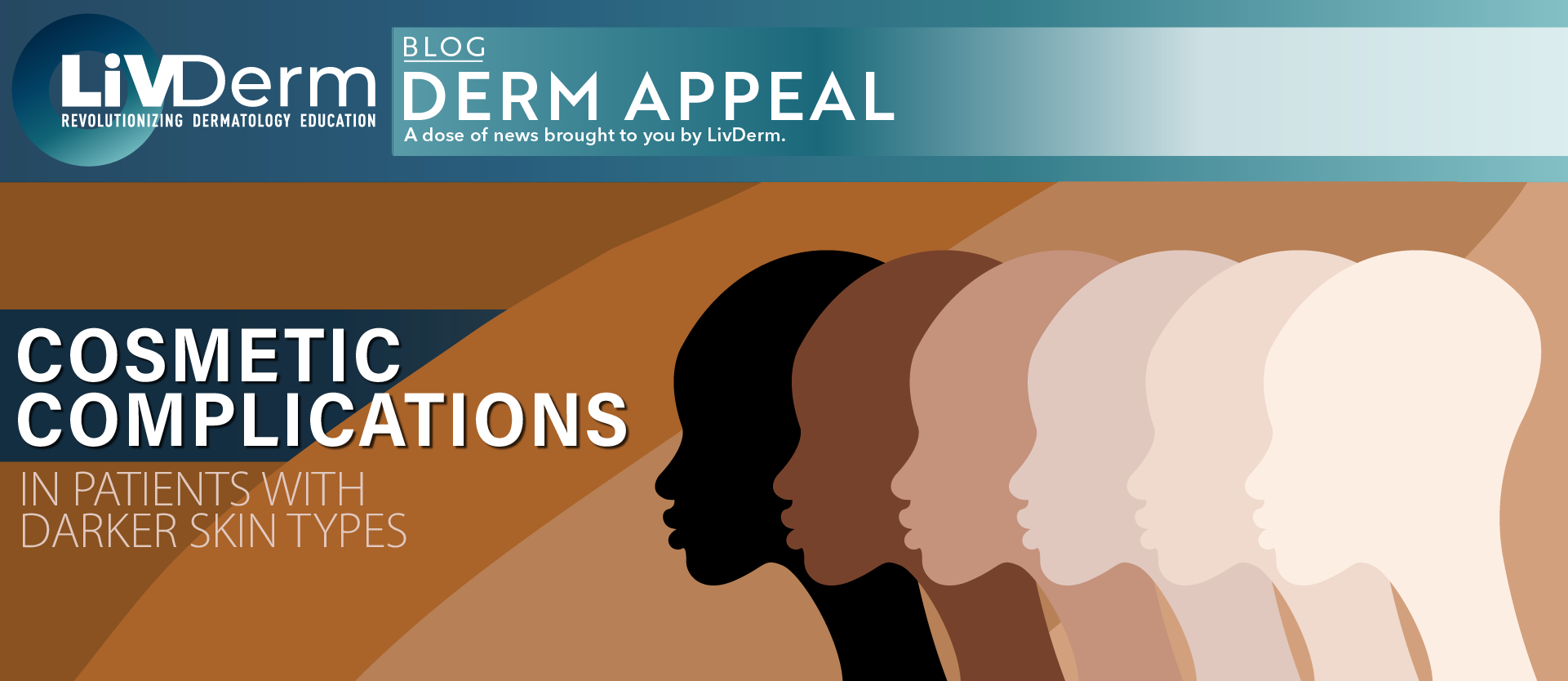Patients with darker skin types, those with Fitzpatrick skin types IV, V, and VI, may experience a spectrum of cutaneous complications and adverse reactions to commonly employed cosmetic procedures, such as laser therapy and chemical peels. This demographic of patients faces an increased risk of cosmetic side effects and requires effective, informative counseling on procedures appropriate for their particular skin type. Clinicians must have a comprehensive understanding of the implications of various cosmetic procedures in pigmented skin types.
“With the advent of medical spas and the cross-over of various specialists into cosmetic procedures, I have seen an upsurge in the number of patients with Fitzpatrick skin types IV, V, and VI who come to me because they experienced an adverse event following a treatment involving a laser or light-based device, filler or neuromodulator injection, or chemical peel,” Dr. Cheryl Burgess, founder and president of the Center for Dermatology and Dermatologic Surgery in Washington, D.C. told Dermatology Times .
Importantly, hyperpigmentation and other adverse cutaneous events associated with cosmetic procedures are based on skin type, not racial identification. Individualized strategies are needed to minimize the risk of potential adverse events and optimize patient satisfaction.
Treating Darker Skin Types
Tailoring therapies is important for all multi-racial patients, not only Black patients, as pigmented skin has greater elasticity, amounts of collagen, oil content, as well as a greater likelihood of darkening in response to injury when compared with white skin. While there are many effective interventions for use in darker skin types – including laser and light treatments, chemical peels, and topical agents – results are entirely dependent on the comprehensive understanding of associated risks and treatment goals.
“The pigment in the skin of patients of color competes for the laser light, which can cause heat-related side effects, like blistering and pigmentary changes,” Dr. Eliot F. Battle Jr., MD, cofounder of Cultura Dermatology and Laser Center inWashington, D.C. told MDedge. “Skin of color also has an increased incidence of scarring and unwanted pigmentary changes from laser treatments that create irritation and inflammation,” he explained.
Not only do clinicians need to remain aware of the differences between skin types and treat them conservatively to minimize adverse events, but patients also need to be educated about the specific cosmetic procedures best tailored to their skin type. Patients should be engaged in seeking a solution that is based on Fitzpatrick scale, Roberts Hyperpigmentation Scale, and other relevant guidance.
Test spots can prove to be a reasonable strategy, according to Dr. Burgess quoted in a recent Dermatology Times article. If clinicians are concerned about the possibility of adverse events, she recommends using low doses of products/therapies and longer intervals between treatments to ensure optimal cosmetic results.
Laser and Light Treatments
Although dermatologic technologies have been greatly improved in recent years, making laser and light procedures in darker skin more effective and safe, pigmented skin types still behave differently in response to this type of energy.
Laser therapies should be tailored appropriately to the particular color of skin with intense pulsed laser (IPL) for hair removal as an example. This technique is not appropriate in patients with Fitzpatrick skin type IV or higher as it can result in first and second-degree burning and hypopigmentation. Postinflammatory hypopigmentation can occur post-hair removal with the use of short pulse 1064-nm Q-switched Nd:YAG laser, while hyperpigmentation is typically more common when the procedure was performed with 532-nm systems.
“The longer 1064-nm wavelength avoids hypopigmentary changes since it bypasses the melanin in the epidermis. Its absorption deeper in the hair leads to thermal destruction of the follicle, which makes the longer wave Nd:YAG laser ideal for hair removal in skin of color,” Dr. Burgess explains, recommending test spots and using a lower fluence in new patients.
“Manufacturer-recommended parameters are based on clinical trials that enrolled mostly patients with Fitzpatrick skin types I-III and some patients with skin type IV, but rarely any- one with darker skin,” she told Dermatology Times. “When patients understand the test is being done for their safety, they are willing to accept the delay.”
Dermal Filler Reactions
Pre-marketing clinical trials have shown that various dermal fillers are mostly safe for use in darker skin types and do not result in an increased risk for pigmentary changes or scarring in patients with skin of color. However, clinicians must have a superior understanding of darker skin types to appropriately use these products.
For example, the majority of hyaluronic acid fillers can be used in patients with Fitzpatrick skin types IV or higher with appropriate technique adjustments. As hyperpigmentation can occur with the use of serial puncture technique and fast injections, filler injections in darker skin are best done slowly using a linear threading technique.
Chemical Peels
For the most part, superficial chemical peels using salicylic acid, lactic acid, malic acid, or glycolic acid can be safely performed in patients with darker skin types. Although, medium and deep peeling agents can raise the risk of dyschromia from rapid skin exfoliation that contributes to deeper exfoliation of lower levels of epidermis. To minimize risk in skin of color, Dr. Burgess recommends neutralizing the acid although neutral pH is not the desired acid strength for chemoexfoliation. “Chemical peels at lower pH require observation of the skin’s reaction and erythema. The end point for a peel isn’t always ‘until it frosts’ in skin of color,” Dr. Burgess concludes.
As adverse skin outcomes and reactions occur most commonly in patients of color, it is important to minimize the risks associated with certain cosmetic procedures basing protocols on a comprehensive understanding of factors influencing darker skin. To maximize patient satisfaction, clinicians are encouraged to carefully select patients for cosmetic procedure, engaging them in frank discussions about expectations, potential results, as well as the risk of complications. Dermatologic strategies need to be tailored to an individual’s skin type; for optimal outcomes, treatments should be started conservatively and gradually work toward the desired result over multiple sessions.
To help clinicians bridge racial gaps in dermatologic care, LivDerm is offering a novel Deep Dive: Racial Disparities in Dermatology online learning event on March 6, 2021 that aims to equip dermatologists with the most clinically relevant strategies for optimizing the treatment of skin of color.
















